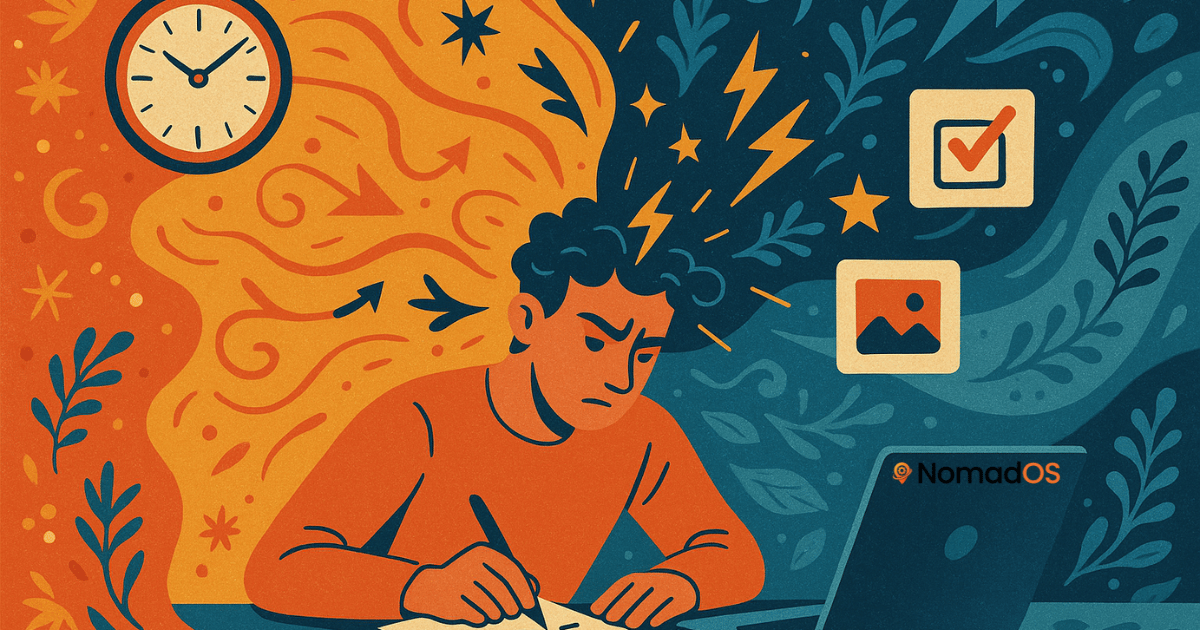⏲ Why the 50-10 Rule Changed How I Work
Barcelona shuts cruise terminals | Turkey blocks eSIM providers | Spain pays nomads €8,000 to relocate

Hey nomads,
Here's what's happening in the nomad world this week.
In this week's issue:
Why the 50-10 productivity method beats Pomodoro for deep work
ChatGPT-5 integrates multimodal AI for seamless workflows
Barcelona cuts cruise tourism while Spain pays nomads to relocate
Turkey blocks international eSIM providers
Southern Europe hits 44°C as extreme heat closes tourist attractions
First time reading: Sign up here.
FEATURED

How I Use the 50-10 Rule
I used to be a productivity method collector, cycling through every technique that promised to unlock my focus. The classic Pomodoro Technique with its 25-minute work blocks?
Sometimes brilliant, often frustrating.
After months of feeling like I wasn't getting work done and losing motivation to sit at my laptop, I realized the problem. I'd finally hit my flow state around minute 20, only to have that timer buzz and yank me out of deep work.
I'd either ignore the break and work through two cycles, or take it and spend another 10 minutes trying to remember where my thoughts were heading.
Then a friend I was coworking with at a coffee shop introduced me to work "sprints" - 50 minutes of focused work followed by a 10-minute break.
After struggling with both the traditional Pomodoro and the 90-minute focus blocks that Andrew Huberman recommends (which left me scattered after an hour), we tried it together that day.
I was shocked by how much I got done.
The 50-10 method, which evolved from Francesco Cirillo's original Pomodoro framework, aligns better with how our brains actually work. Research suggests human attention naturally fluctuates in cycles of 50-90 minutes, meaning you can sustain deep focus longer than Pomodoro assumes, but not as long as the 90-minute method demands.
My current system uses two blocks daily, each containing three 50-minute sprints. I take 10-minute breaks between the first two sessions, then a longer break (at least 30 minutes) before starting the second block.
This structure has allowed me to complete tasks in two blocks that I previously thought would take an entire week.
But here's the game-changer detail most productivity guides miss: workspace preparation. I learned this from Adam Finan on the Digital Nomad Cafe podcast - start each sprint with a complete mind dump of all thoughts and tasks, then open only the tabs you need for that specific 50-minute session.
This laser focus approach eliminates the cognitive load of seeing unfinished tasks from yesterday or random research tabs calling for attention.
When your digital workspace matches your mental workspace, the 50 minutes become genuinely productive instead of just busy.
The key to making breaks work is stepping away completely. No phone checking, no screens. I get up and move away from my workspace - stretching, taking a walk, doing light exercise, washing dishes, or even meditating.
Anything that gives my brain genuine rest without cognitive load.
Five hours of this laser-focused work accomplishes more than 8-9 hours at the laptop filled with distractions and scattered multitasking.
Recent studies on micro-breaks show that 10-minute rest periods effectively reduce fatigue and improve well-being, though the research remains mixed on whether 50-10 beats other ratios for everyone. What matters is finding what works for your brain and your work style.
For nomads juggling client work across time zones, managing side projects, and trying to explore new destinations, the 50-10 method offers structure without rigidity. You can complete meaningful work in predictable chunks, then actually enjoy your breaks instead of feeling guilty about them.
The method isn't magic, but it's sustainable. And sustainability is what separates productivity systems that stick from those that fade after a few weeks of initial enthusiasm.

That’s it for today.
Thanks for reading, until next week!
Liam
How did you like today's newsletter? |